Nepal has over 6000 rivers but river tubing in Nepal remains surprisingly unknown.
Quick Summary on River Tubing in Nepal
- In spite of having over 6000 rivers there is only one river i.e Sun koshi where currently river tubing is done.
- Many rivers in terai and hilly region of nepal have calm flow which gives many opportunities for tubing in Nepal.
- In spite of low risk, one should always be careful and obey guide while experiencing river tubing.
River tubing, the water sport, that adds peace to the thrill. The peaceful experience that doesn’t require a paddle or a helmet on your head. The one where you don’t flow; you just row.
While trekking in regions like Annapurna and Everest is quite famous, the field of river tubing remains unexplored in Nepal.
And it’s not like there is no opportunity for Nepal in this field. Truth is, most of the rivers in Nepal are actually perfect for tubing.
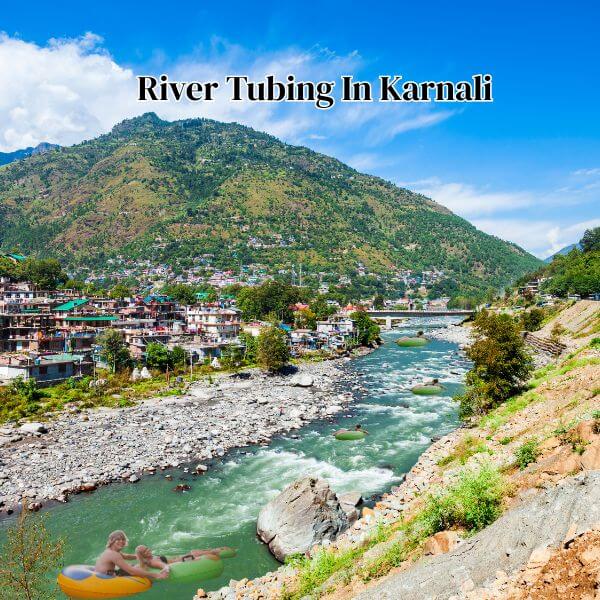
In fact, a large number of Nepal’s 6,000-plus rivers are small to medium in size, especially in the hilly and Terai regions. They’re not too deep and not too wild. These rivers offer just the right kind of gentle current for a safe and scenic tubing ride.
And you know what the best part is?
These rivers already flow through some of Nepal’s most beautiful locations covered with green forests, terraced villages, rice paddies, and some naturally gifted places.
But before discussing about its opportunities in Nepal I feel responsible to tell you guys a little about what river tubing is.
What Is River Tubing?
River tubing is simple. You sit or lie on an inflatable ring and the crazy part is you don’t paddle. All you gotta do is let the current carry you.
Some stretches are peaceful. Some have light waves. However, even with the light waves it’s not as extreme as rafting or kayaking.
This is a slow travel. The kind where your only job is to float and feel everything around you.
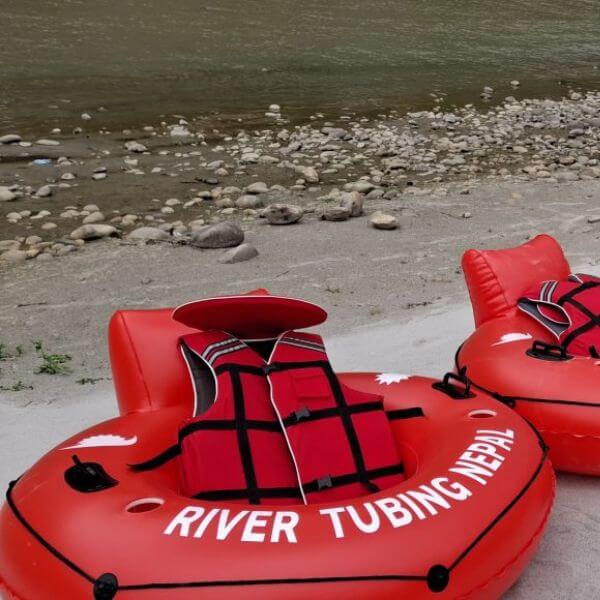
Now, let’s be clear, this is different from the kind of tubing where you get pulled by a boat. That version is louder and a lot more aggressive.
What we’re talking about is the kind where you do nothing, and that’s exactly why it feels so good.
With that being said I would also like to remind you that it still poses some threat. And while enjoying your peaceful time you must have your life jacket on and follow your guide at all cost.
Because even a lazy river can turn dangerous if people don’t respect it.
What Kind of River Is Best for Tubing?
Not every river is safe for tubing, some of them flow too fast while some can get too rocky.
In fact, you also need to look at how shallow the river is, as many tubes have the tendency to scrape the ground every five minutes in shallow rivers.

So to find a perfect river I decided to look at the global tubing destinations. And from our research, here are the main things that make a river great for tubing:
What Makes a River Tubing-Friendly?
Gentle Slope (Gradient)
From our research we came to know if a river flows down too steeply, it becomes dangerous.In addition to that we also came to realize, the tube won’t make a budge if the river is too flat as well.
However, if the slope for tubing is between 0.3 to 4 meters per kilometer then it reaches its perfect slope. In these kinds of slopes, the current moves you ahead gently.Moderate Water Flow (Discharge)
The other thing to consider is water flow. In river tubing, you want the water to move but not rush. So for small rivers water flow must be 2 to 5 m³/s.
On the other hand, medium rivers can go up to 100 m³/s as this provides you a smooth ride without pulling you too fast.
Good Width and Depth
Ideal tubing rivers are 5 to 10 meters wide and 0.7 to 2 meters deep. If the river is too narrow, you’ll keep bumping into things. If it’s too shallow, you might get stuck or scratched.
Stable Flow (Even After Rain)
Some rivers flood fast after heavy rain. That’s risky. The best rivers for tubing flow through forests or soft soil areas, where the rain gets absorbed slowly. As that makes water levels rise gently, not suddenly.
Clean Riverbed
Rivers with sand or gravel at the bottom are perfect. But if the river has lots of big rocks, hidden branches, or sharp debris, tubing becomes unsafe—especially after floods.
Small Waves, Not Big Rapids
Some bumps are fun. Class I and II rapids give you a little splash. But anything stronger than that is not good for tubing. You want a mix of light rapids and calm pools so you can float and relax.
Why Nepal Is Actually Perfect for Tubing
Now you guys must be wondering what about rivers in Nepal are they good for tubing?
To get the clear answer you can just look at the geography. In Terai and mid-hill regions, you’ll find calm water flow—usually between 100 to 400 cubic meters per second. That’s ideal for tubing.
These aren’t loud, angry rivers. They’re peaceful. But not boring. And since many of them are already passing through tourist zones or local villages, no big infrastructure is needed. Just a good operator and a proper tube.
Nepal is already big on trekking and rafting. Tubing is the next obvious step.
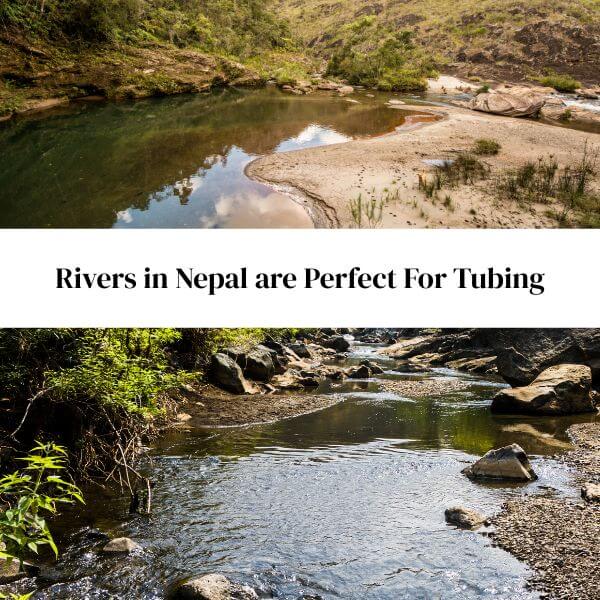
Tubing vs. Rafting: What’s the Real Difference?
Now, most of you guys must be wondering how different can tubing be from rafting.
Well, you can understand it this way: Tubing is like meditation and on the other hand, Rafting is like a group workout.
If you’re someone who enjoys sitting still, soaking in the view, and letting go, tubing wins.
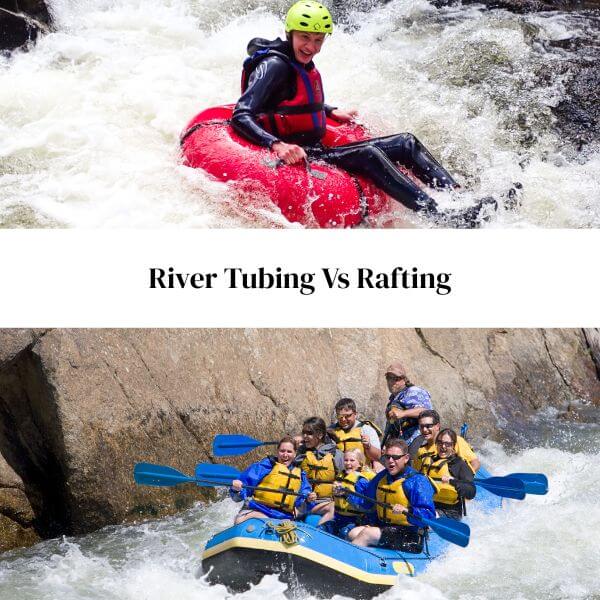
But if you want adrenaline, paddles, helmets, and wild splashes with 7 other people screaming on the same boat, then rafting is your thing.
Both are fun. But very different kinds of fun. Tubing doesn’t need strength or skill. It just needs time. And maybe sunscreen.
The First Official Tubing Trail — Sun Koshi
In May 2025, Sun Koshi launched Nepal’s first-ever organized river tubing experience. It started from Dolalghat to Pachuwarghat—just a short drive from Kathmandu. About 48 people tried it on the first day.
Not bad for a new sport.
Sun Koshi is not a small river. It’s around 270 kilometers long and has some serious Class III and IV rapids. But tubing is done in the calmer parts only.
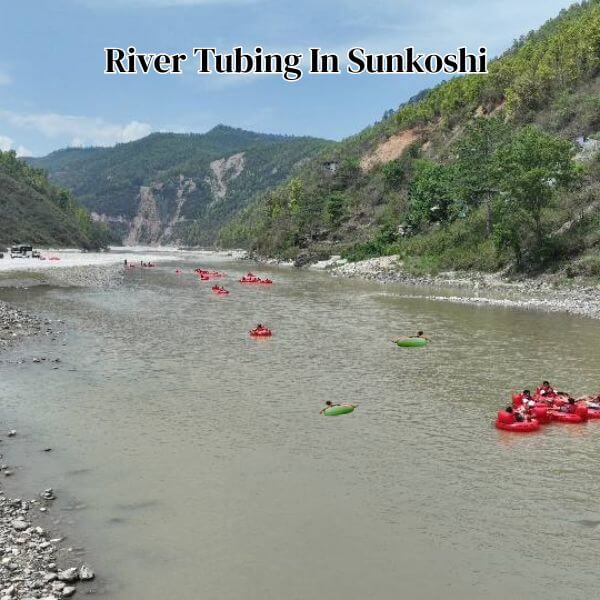
The trips are usually 2 to 3 hours long. You get a guide, safety gear, and a riverside meal. Some packages even include overnight camping. It’s peaceful. It’s local. And it’s affordable.
What Other Rivers in Nepal Are Best for Tubing?
As per our opinion, here is the list of other rivers that would be absolutely great for tubing:
Trishuli River
If you are a fan of water sports, you already know it’s quite famous for rafting.
However, Class II and III parts of Trishuli are calm enough. Furthermore, it’s also really close to both Kathmandu and Pokhara, two of the busiest cities in Nepal.
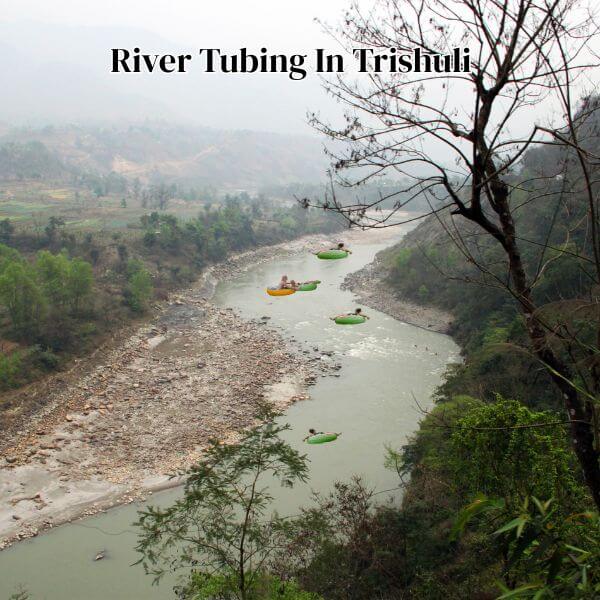
Seti River (Pokhara side)
Seti River on the Pokhara side offers the combination of warm water and chill vibes which would be perfect for a family or an individual looking to get away from their busy life.
Plus given its proximity to Lakeside the tubing in this region has the potential to be really huge.
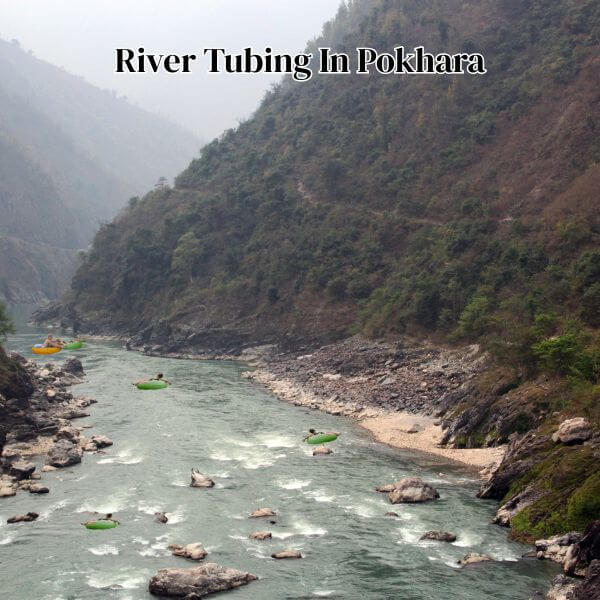
What Might Be the Best Time for Tubing in Nepal?
For the perfect tubing experience, the spring (March–May) or the autumn (September–November) season will be great. As during that time, the rivers are neither too high nor too dry which makes it perfect for tubing.
However, planning tubing during the monsoon should be avoided at all costs. During those seasons, the rivers in Nepal get rough, and flash floods are frequent which poses a real threat.
Talking about the winter season, it can be tricky. Some rivers during that do get shallow. But tubing in the Terai during winter might still be possible with the help of proper timing and gear.
What a Tubing Day Looks Like in Sunkoshi
Now, let’s shift our focus from what can be great to what is available currently. Most tubing trips in Sunkoshi start in the morning. You meet the operator. They give you a safety briefing, gear, and transport.
You float for 2–3 hours. You stop for a local meal. And maybe you camp out under the stars if you booked a longer trip. Some early packages were priced around NPR 1,500 to 3,000 with food and guide included. Pretty decent for a full-day escape from the city.
You won’t need to carry much. Just your clothes, maybe a towel, and your curiosity.

Things to Pack During River Tubing in Nepal
To increase your experience we recommend you to pack these items if you’re planning for river tubing in Nepal:
- Quick-dry clothes
- Sunscreen
- Sandals or water shoes
- Towel
- Dry bag
- Extra t-shirt or shorts
- Camera if it’s waterproof
Optional packing stuffs: GoPro. Snacks. A hat. And a speaker (if you’re the party person).
How to Stay Safe During River Tubing?
Here’s the honest part—tubing is easy. But accidents do happen. As per natonwidechildrens.org, in the U.S., injuries from tubing went up by 250% between 1991 and 2009.
Most of them involved the head or upper body. Usually because of collisions or overcrowding. That’s why safety rules matter. One person per tube. Wear the life jacket. Listen to your guide.
And please—don’t do it alone, especially during monsoon season.
Final Words
Nepal’s tubing scene is just getting started. But if done right, it could become one of the country’s best new adventure exports

